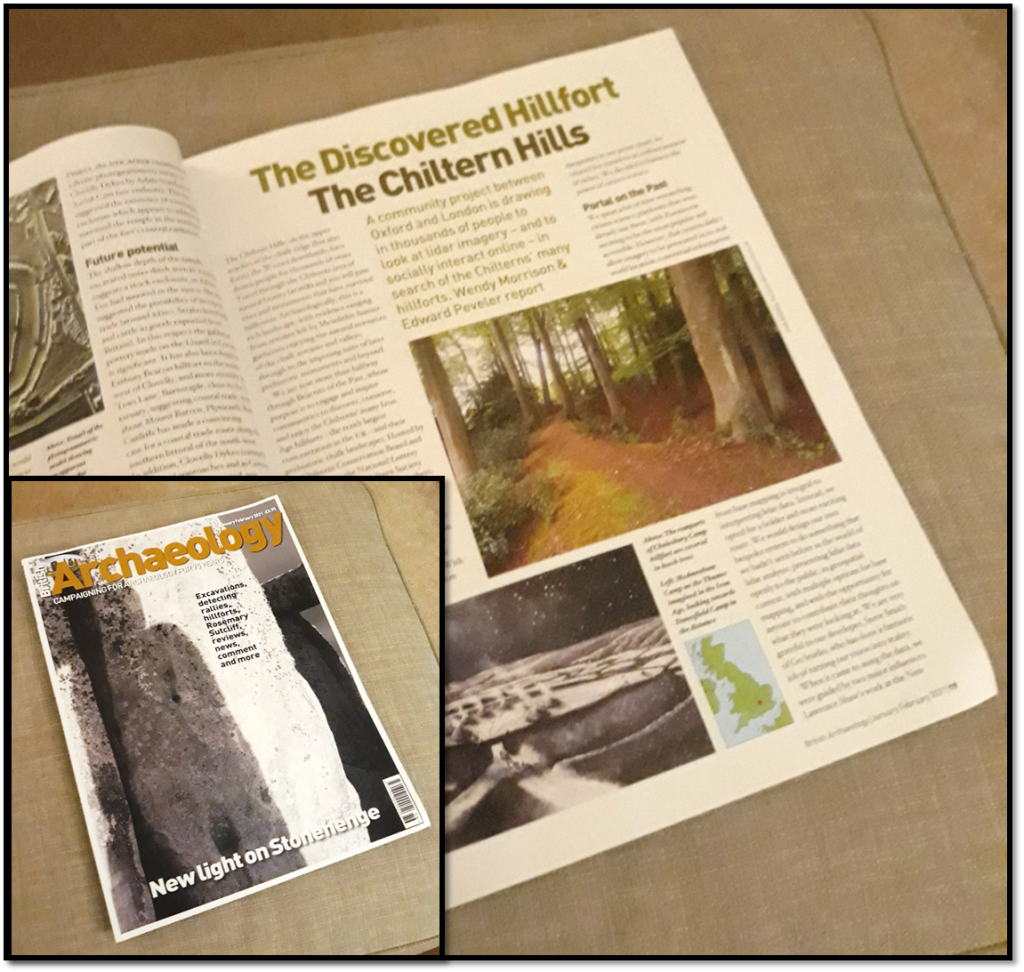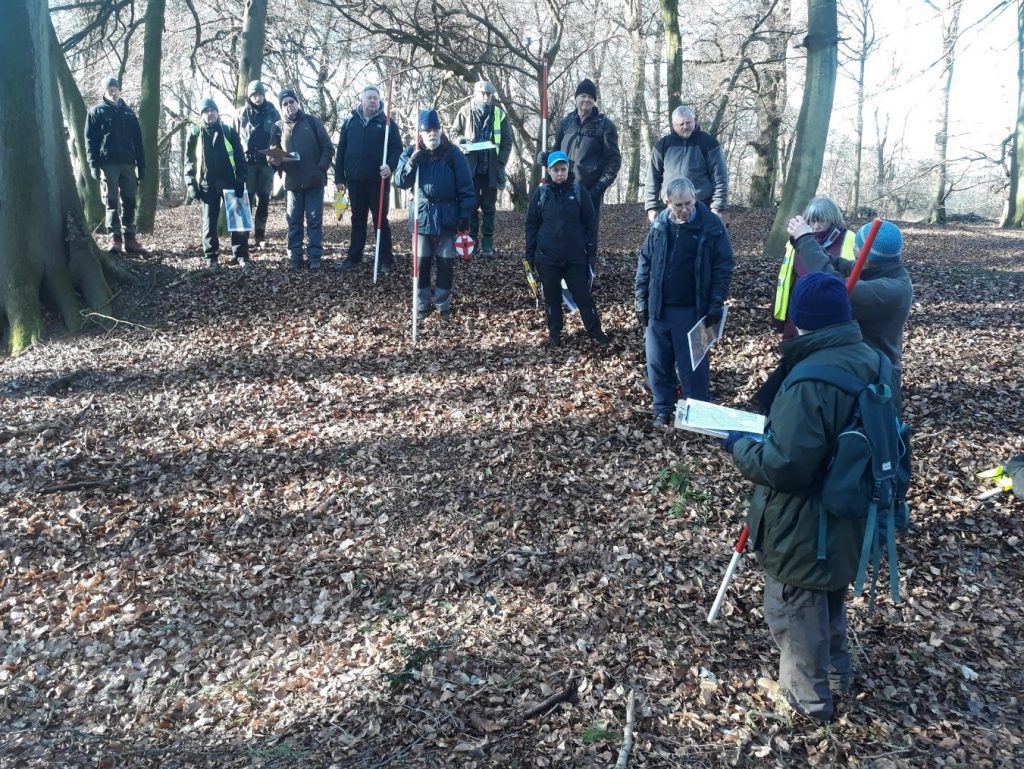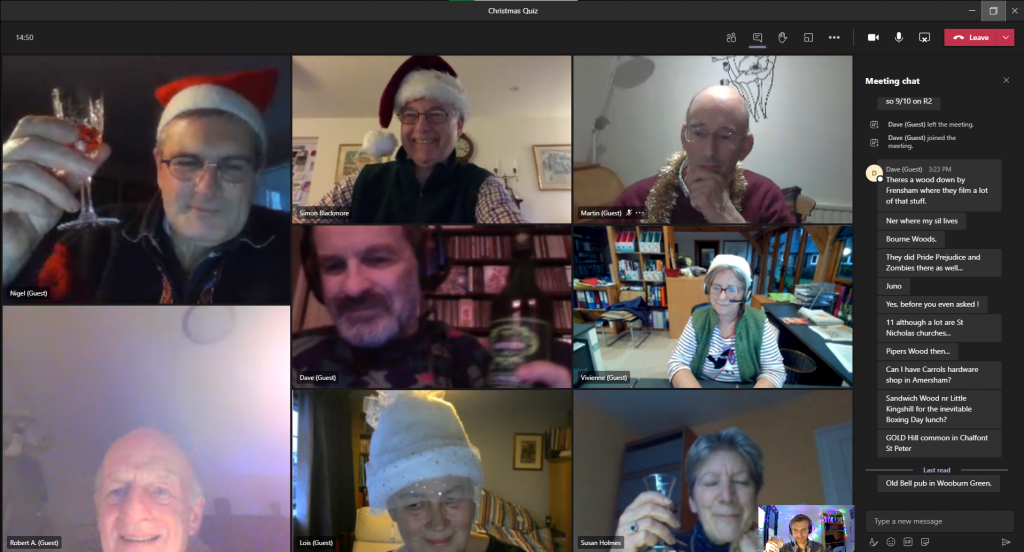2020 has obviously been a difficult year for many. For the project, whilst some plans have had to be put on hold due to Covid restrictions, we have been fortunate that our LiDAR Portal was pretty much ready-made for just such a situation, and so work has been able to carry on. As I discussed in an earlier blog post, activity on the Portal continued positively throughout the lockdown period through April and May and into the summer, seeing a drop off when we were let out for a while in August and September. Over 10,000 records have been recorded in the Citizen portal, and the records from this year alone sum to over 60 km2 of archaeological features! (That’s a lot of saw pits…) We hope that the Portal has provided a welcome activity and distraction for lots of you whilst we’ve all been stuck at home and prevented from going about our usual lives.

When 2020 started we were just getting to the stage of launching the project’s Review Portal – our system for assessing all of the Citizen Records sent in. We managed to hold a couple of in-person training sessions early in the year, which feel like a lifetime ago now. Through the Spring some fantastic trialling and testing from the earliest Reviewers enabled us to get on top of bugs, refine the functionality, and here we are the end of the year with more than 40 Reviewers trained up, and nigh on 4500 records processed and stored in our Upper Database. My sincere thanks go out to all of the Reviewers, including those of you working through connected projects such as the South Oxfordshire Archaeology Group Goring Heath project and the Bucks Thames Project.

The project has made a few headlines this year, including an article in The Times (paywall) back in May, an appearance on the BBC News website in August with the announcement of our new hillfort, and those of you who read it may have spotted us in the most recent edition of British Archaeology magazine.

Back at the start of the 2020 PC (pre-Covid) we also managed to get out to do a couple of ground-truthing sessions, both with the National Trust, one at Pulpit Hill and one at Ashridge. These were great fun in spite of the cold weather and some nervousness about wind-blown trees from Storms Brendan and Ciara. Very sadly we have had to say thank you and farewell to Gary Marshall, the National Trust archaeologist for a large part of our region, who is moving on to new things. He has been one of the key champions of the project since its inception, and a constant source of knowledge and help, and he will be greatly missed.

In-person practical activities have been all but curtailed since then, although Wendy and I have been able, during periods of “un-lockdown,” to get out and visit a small handful of sites, including a great day out visiting features in Hodgemoor Wood, and another at Penn Wood. Fingers crossed 2021 will allow us safely to resume some field-checking exercises with small groups of you.
Plenty of other work has been continuing behind the scenes, including work towards larger scale management plans and actions for some of our hillfort sites – plenty more news to come on this front in the next few months.
In addition, I have had great fun this year working with a number of you on research activities around the LiDAR data. From the big group “landscape” projects mentioned above, to small group and individual projects on topics such as the Roman roads in the data, cross-ridge dykes, and prehistoric field systems. The energy and skill from volunteers has been wonderful to see. Lots of you have dropped in to training sessions, workshops, and mapathons, and it has been brilliant being able to keep in touch digitally. Several of my talks and training sessions are available on Youtube to watch back if you didn’t catch them first time around, including…
A basic overview of the LiDAR project to date:
A tutorial in how to find and process open source LiDAR data using free tools:
And different approaches to visualising LiDAR data, including 3D environments:
You can also re-live Wendy’s talk to the Ver Valley Society here:
So what’s to come for 2021? For me it will be the year of trying to get our Upper Database as full and up-to-scratch as possible, ready to hand over to our local HERs so that it can be used for planning, management, and research purposes. We really do need lots of help with this, and it is perhaps one of the ways you can make the most difference for protecting Chilterns archaeology. Records that you help us add here will ensure archaeological sites get protected and investigated for decades to come, so please do join in by signing up for Review Portal training and giving us a hand. Register your interest for training in the New Year by filling in the form linked here.
We do appreciate though that digital data collection can only entertain for so long, and we really hope we can resume some practical activities at some point – we know lots of you are keen to get your hands dirty with fieldwork. We are also hoping to have some publications coming out on a few topics, so watch this space, we’ll share links to those when we can!

We hope you all have a happy, healthy, and comfortable Chritsmas, in spite of the travails of the world. I’m looking forward to food, warmth and light, connecting with loved ones (whether in person or via digital means), and having a bit of time to reflect on a year gone, and plan for a new year ahead. Io Saturnalia, Waes Hael, and Merry Christmas!
I’m sure I speak for many of us, in saying that it’s been great to get so involved with such a fantastic project. I’m looking forward to more interesting discoveries in 2021 – but I’m not sure I need any more saw pits.